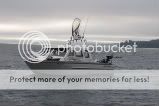Jencourt
Well-Known Member
This is kinda late I know and I am not sure if it has all ready been posted or not. It was the first I had seen of it so I thought I would put it up. As some one who has never been a fan of the seine fishing method I found it both amazing and a little disturbing.
http://thecanadian.org/k2/item/304-fraser-sockeye-fishery
No place I would rather be (FISH ON)
http://thecanadian.org/k2/item/304-fraser-sockeye-fishery
No place I would rather be (FISH ON)


